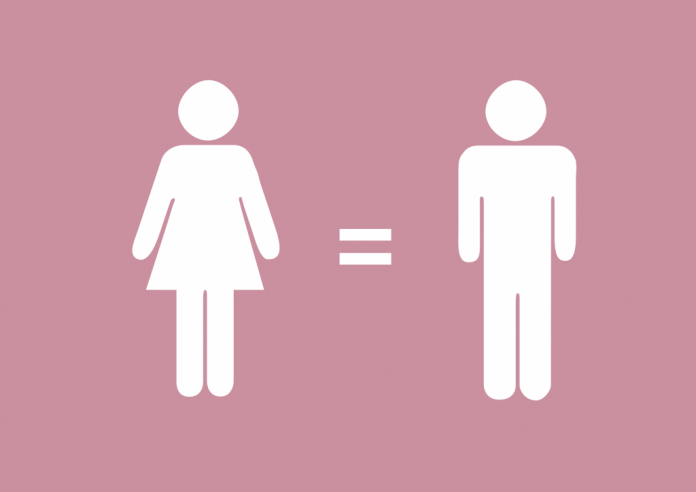This article has been written by Komal Khatri, Diploma in English Communication for Lawyers – oratory, writing, listening and accuracy, and has been edited by Oishika Banerji (Team Lawsikho).
It has been published by Rachit Garg.
Table of Contents
Introduction
Evidence is the most important and critical part of our justice delivery system. In the criminal justice system, statements of eyewitnesses play an important role in ensuring justice. The principles of justice make impartiality and truth an important mandate, hence bringing in the relevance behind the requirement of a third party (not related to the parties involved in the alleged incident), to report the commission of the crime. Eyewitness testimony is when a person witnesses a crime and can testify such seeing before a court of law if the need arises. Eyewitness memories are a crucial source of information for an investigation of a case. However some research focused on sex differences in the accuracy of memory recall for specific details of an event. Memory distortion affects the testimonies of witnesses and hence is a serious problem in the delivery of justice. The problem of reliability of eyewitness testimony is critical because confidently uttered words of the eyewitness are contemplated as impartial, valid and true, as they are made under an oath, by a third party, however, it does not mean that the statement is accurate since the witness may have omitted few facts that have a significant effect on the case. The genuineness of the eyewitness testimony is influenced by various factors such as age, gender, race or nationality, belonging to a particular social group or organisation and many other aspects. This article focuses on the aspect of gender bias in relation to eyewitness testimony.
Gender bias in eyewitness testimony
Gender bias in eyewitness testimony can be defined as biases said to have taken place in eyewitness testimony, given by a person, on the basis of the individual’s gender. This bias can be due to various factors, including stereotypes, expectations, and assumptions about gender roles. Gender bias in eyewitness testimony is a well-documented phenomenon that has been studied extensively in the field of psychology; it can be a form of conscious or unconscious bias that affects how a witness perceives or recalls a crime. It is a form of cognitive bias that occurs when a person‘s gender influences their memory of an event or their interpretation of a situation. This bias is based on the witness’s gender and may lead to inaccurate or incomplete information regarding the incident, which can have serious implications in the criminal justice system.
Eyewitness testimony is a powerful form of evidence in criminal cases and it is often used to determine guilt or innocence. However, research has found that witnesses are often more likely to incorrectly identify a suspect of a different gender and that witnesses are more likely to misidentify a female suspect as being a male. Studies have found that male witnesses are more likely to remember more details of a crime scene, including weapon type and perpetrator description while female witnesses on the other hand tend to remember more contextual details such as the location of the crime and person’s description. In particular, it is found that people are more often likely to remember details about a person’s gender (their own gender ) than other aspects of the events, this can lead to inaccurate and incomplete accounts of events, which can have serious implications in the criminal justice system.
Studies that support gender bias
Before the implementation of forensic experts, eyewitnesses were heavily burdened with drawing conclusions to incidents, which in turn led to being wrongfully accused and punished in many cases. In 1901, William Stern collaborated with a criminologist on an interesting experiment that showed the level of inaccuracy in eyewitness accounts.
The experiment was conducted on a few participants who were asked to watch a video of a robbery and then were asked to identify the robber. Results of the experiment showed that participants were more likely to identify the robber as a man rather than a woman. The results of the experiment showed that gender bias was present in the way participants identified the robbers, hence Stern, based on this experiment, suggested that women’s eyewitness testimony was less reliable and inaccurate, and they often misled information than men’s. Stern’s experiment was one of the earliest studies to suggest that gender bias can play a role in the accuracy of eyewitness testimony.
He found that when men and women of the same age and approximate physical appearance were witnesses to the crime, the testimony of the male was likely to be believed by a jury, in comparison to that of the female. However, there are few other studies that support gender bias in eyewitnesses. In another study subjects were shown a 2-minute film, in which a man was trying to rob a woman, upon resistance, he assaulted her and stole her purse and ran away. One week later participants were given a checklist to be filled, out concerning the various details of the event. Results showed that females accurately recalled more details about the victim since the victim was a female. This finding supports the theory that females are more accurate in recalling information when asked about other female-oriented details. Results also showed that females were better at setting descriptions.
Likewise Clifford and Bull (1978) on the role of gender in eyewitness testimony found that gender can have a significant effect on the accuracy of eyewitness testimony. Through the study, it was found that male eyewitnesses were more likely to correctly recall details of a crime than female eyewitnesses. Additionally, it was determined that female eyewitnesses were more likely to remember details of a crime that were not actually part of the crime itself, Nevertheless males outperform females in stressful situations.It was concluded that gender should be considered when evaluating the accuracy of eyewitness testimony. Likewise, gender bias concerning eyewitnesses can also be seen in courtroom proceedings.
In the case of Kassin and Ellsworth’s 1989 study, the gender bias in witness reactions was explored by having participants view either a male or female confessor in a simulated police interrogation. Participants then evaluated the confessor’s veracity and assigned a sentence and fine based on the confessor’s confession. As expected, the results showed that gender bias was present, as participants reacted more positively to confessions from male confessors and were assigned harsher sentences and fines to confessions from female confessors. The findings of the study demonstrate that gender bias affects people’s perceptions, judgments, and decisions in legal cases.
Many other researchers found that men are more likely to make accurate identifications than women, which could lead to an unconscious gender bias in the courtroom. This gender bias can be addressed by using double-blind lineups and using evidence-based procedures to ensure fair outcomes.
Studies that do not support gender bias
Many early theorists believed that men were better eyewitnesses than women, however, there are subsequent studies that challenged Stern’s theory. Many contradicting findings challenged Stern’s theory and showed that there are no significant gender differences in eyewitnesses.
Gender bias in eyewitness testimony is a longstanding problem that has been well-documented in research and legal cases. Studies have found that people are more likely to identify members of the opposite gender as perpetrators of a crime more than members of their own gender. To combat this, many researchers have conducted studies on how to reduce gender bias in eyewitness testimony. In the case of State v. Henderson (2011), the Supreme Court of the United States unanimously held that gender bias in eyewitness identification is a violation of the defendant’s right to due process. The court found that gender bias could have an impact on the accuracy of eyewitness identification, and thus the reliability of the evidence. Also the Indian judiciary treats both genders fairly. The Supreme Court stated that such discrimination can lead to potential miscarriages of justice and called for greater awareness of the potential for bias among those involved in the criminal justice system.
In another study, participants were shown a movie in which a man was robbed and shot dead in a park, later a few participants both men and women, were given a questionnaire to assess the level of accuracy in the event. The assessment was done twice, once immediately and another a week later. Results showed that females outperformed in accuracy than males. However there was no gender difference in the quantity of information about the event recalled.
There have been a number of cases that have addressed issues of gender bias in eyewitness testimony. In People v. Webb (2016), the New York Court of Appeals held that gender bias could be considered by a jury when evaluating the credibility of an eyewitness. In Crawford, Chaffin, & Fitton, 1995,; Hamilton, 1995 the court held that the trial court had erred by failing to instruct the jury about the potential impact of gender bias on the testimony of an eyewitness. In both cases, the court determined that gender bias could impact the reliability of eyewitness testimony and should be considered by a jury. Additionally, the Supreme Court decision in Crawford v. Washington (2004) discussed the potential impact of gender bias in the context of testimonial evidence.
Conclusion
As we come to a conclusion, it is ideal to state that memory distortions can be responsible for affecting the testimonies of criminal act witnesses thereby causing a serious problem for two reasons in general, namely:
- They are said to have a hand on the success rate in any criminal act investigations thereby also being responsible for influencing court decisions.
- Gender is considered to be one of the factors that significantly influence memory recall, although no research has been sufficient enough to show as to how great the differences are between male and female testimonies and what are those differences.
Therefore, one thing to note is that when assessing eyewitness reliability in both criminal and court cases, it must be kept in mind that the confidence levels of the eyewitness can itself be a misleading factor, irrespective of the gender of the witnesses. Generally speaking, males intend to express unjustifiably greater confidence in comparison to females, making them seem reliable and trustworthy thereby leading criminal investigators and judges to reach a wrong conclusion. Females, in this scenario, can be said to be showcasing less confidence, but the scope for contributing to misleading results cannot be ignored as well. But, the information provided by females weighs higher in accuracy than those provided by their male counterparts.
References
- https://www.frontiersin.org/articles/10.3389/fpsyg.2019.00703/full.
- https://historyforensicpsych.umwblogs.org/eye-witness-accounts/.
- https://encyclopedia.pub/entry/29376#:~:text=However%2C%20subsequent%20studies%20challenged%20Stern’s,gender%20differences%20in%20eyewitness%20memory.
- https://images.app.goo.gl/2ApDqGiXXqyNq5xm9
Students of Lawsikho courses regularly produce writing assignments and work on practical exercises as a part of their coursework and develop themselves in real-life practical skills.
LawSikho has created a telegram group for exchanging legal knowledge, referrals, and various opportunities. You can click on this link and join:
Follow us on Instagram and subscribe to our YouTube channel for more amazing legal content.
 Serato DJ Crack 2025Serato DJ PRO Crack
Serato DJ Crack 2025Serato DJ PRO Crack











 Allow notifications
Allow notifications



